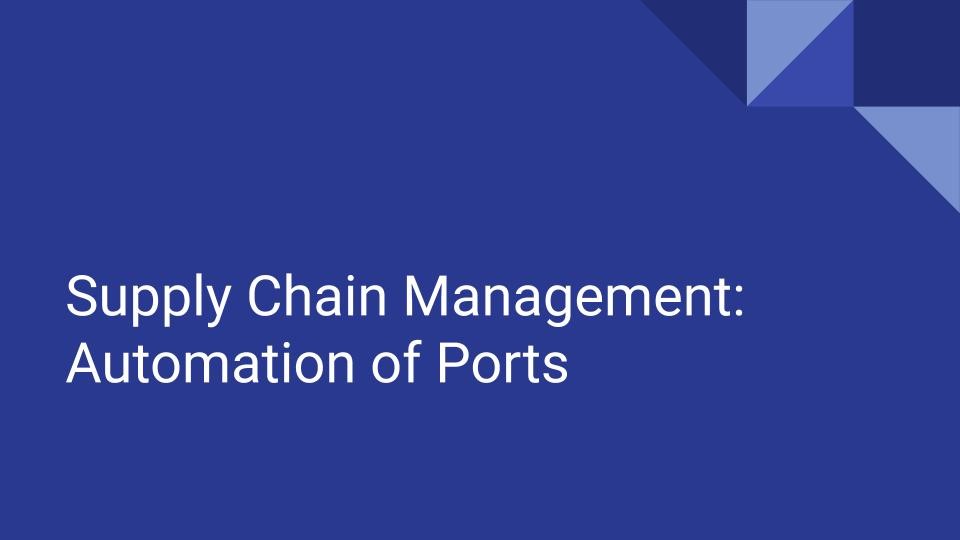
The supply chain is a complex mechanism that often involves the utilization of goods and services that are sourced both locally and internationally. From an international perspective, it is important to note that many items may be shipped to a location from source countries such as China. Shipment of products often involves the utilization of ports and freight systems, and these systems do have their own level of automation. With all systems however, there is always room for improvement. All industrial systems are on a continuous quest to optimize their systems, and embracing technology will be the path that will facilitate this change.
Within the port, great logistical detail is necessary, in order to ensure that the items arrive to their destination on time. At the time of writing of this article, automated driverless container trucks, and also the utilization of port robots to move the containers from their arrival point to their departure points, are being trialled and incorporated into port systems. The 5G infrastructure, provides a framework for automation of ports.
While all sectors do have their own indigenous rates that they adapt to Industry 4.0, the ports as a collective have been one of the slower adapters to the technology. There is a detectable change however, and it is now becoming more apparent that port automation is a must for the future. The presence of an opportunity like the pandemic, is actually a key lever that will enable port automation to become a priority. Industry supply chain disruptions during the pandemic have provided sufficient evidence that automation is to be the path for progression for the industry.
The key beneficiaries of the port automation endeavours are large scale wholesalers such as Cosco. With the volumes that these organizations are able to store and supply to their customers, it is important for organizations to understand how the company has managed to keep its stock up, while instances like the pandemic continue to affect the supply chain. Cosco does import some of its products, and utilizes shipping vessels in order to accomplish this.
Cosco utilizes a 5G smart port in order to accomplish some of its logistical objectives. Via a trial of the technology, the organization has proven that the technology could enable smarter port systems, and be pivotal in the upgrading of port systems. These advanced port systems are incorporating technologies such as edge computing, high precision positioning, artificial intelligence and computer vision as part of the process of shipment.
Advances in Machine Vision
Machine Vision and Deep Learning are a power combination of technology and software that is changing the way that ports are actually able to conduct their operational activities. They are definitely game changers in the logistics realm. As a tool that has optimized and revolutionized the way that ports are able to inspect their products, there is a guarantee of consistent and accurate results. In a time like the current condition, where government mandates are requiring stay at home orders, it will be important for ports to still be able to provide goods. From a logistics standpoint, machine vision is able to effectively remove the human variable from the equation, and keep the port running for 24 hours a day.
The ability to see what is acceptable and unacceptable during shipment is something that the port will definitely need in its abilities to maintain a high quality adaptable system. Machine Vision is a critical component to a stable, port operation.
Machine Vision in Port Quality Control
The fusion of Machine Vision and Deep Learning will be the wave of the logistical future. With the ability to actually utilize their vision control system to check for container quality control, port systems can actually make the decision to read product information and delivery location, and guide autonomous robots to the appropriate location on the port. With barcode systems that fuse with the vision system, the ability to trace the appropriate phases of the port system were facilitated. Critical parameters are checked, and if satisfactory, they will be sent to the next stage of the process. The vision system is a port automation technology that will improve operational efficiency.
Utilizing integrations from a camera to an X-ray device, ports can determine the level of detail that they want to integrate into their quality operations. With robots and cobots at the helm, logistical managers can rest assured that they will be adequately capable, once they trained in automated port management. Industry 4.0 is the path forward in 2020 and beyond.
